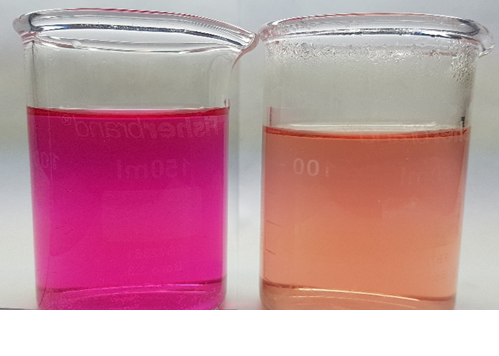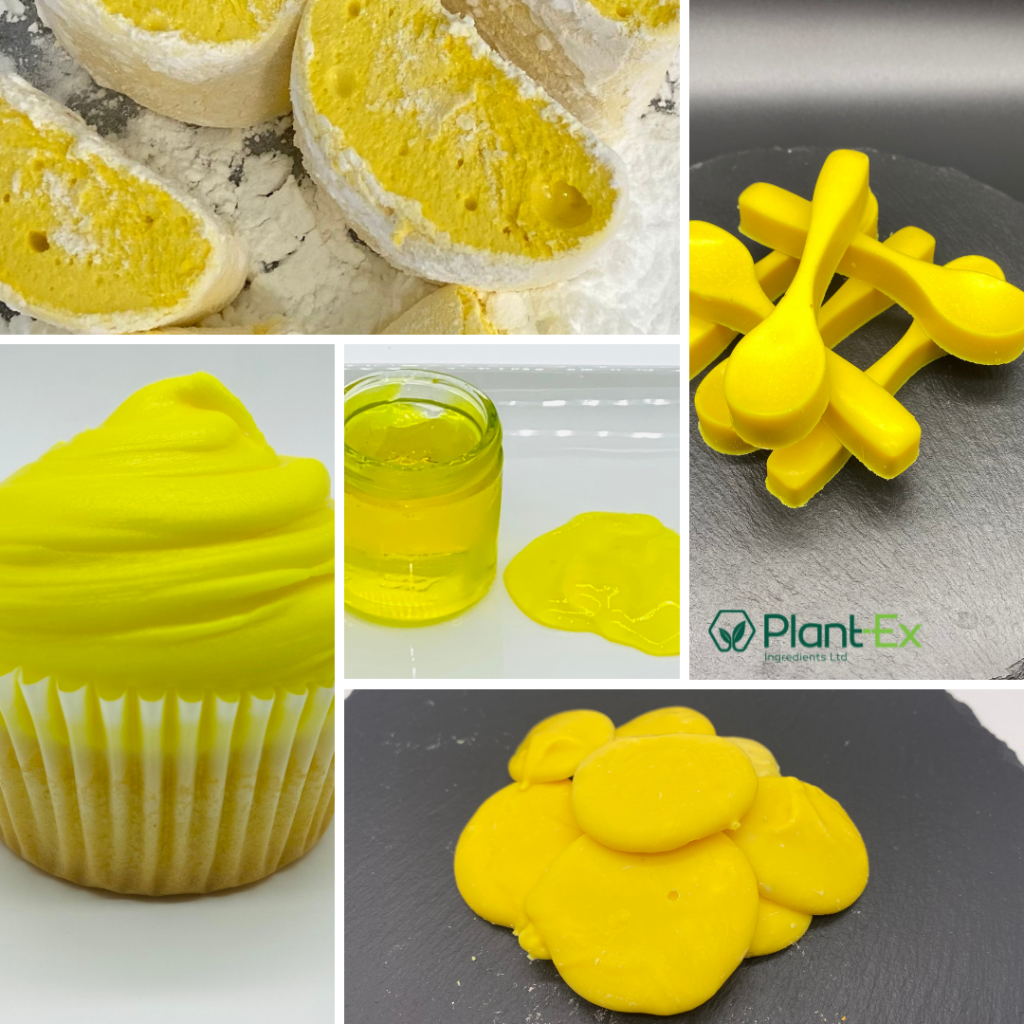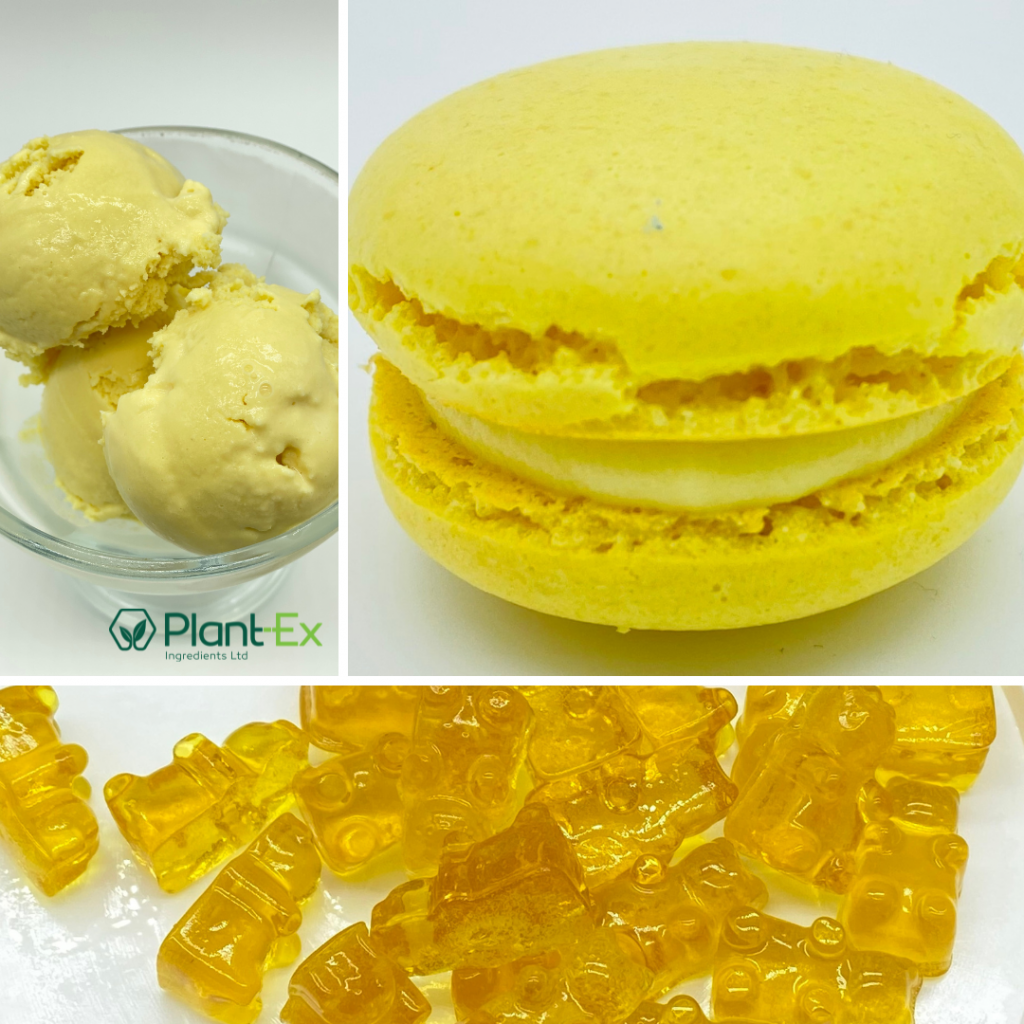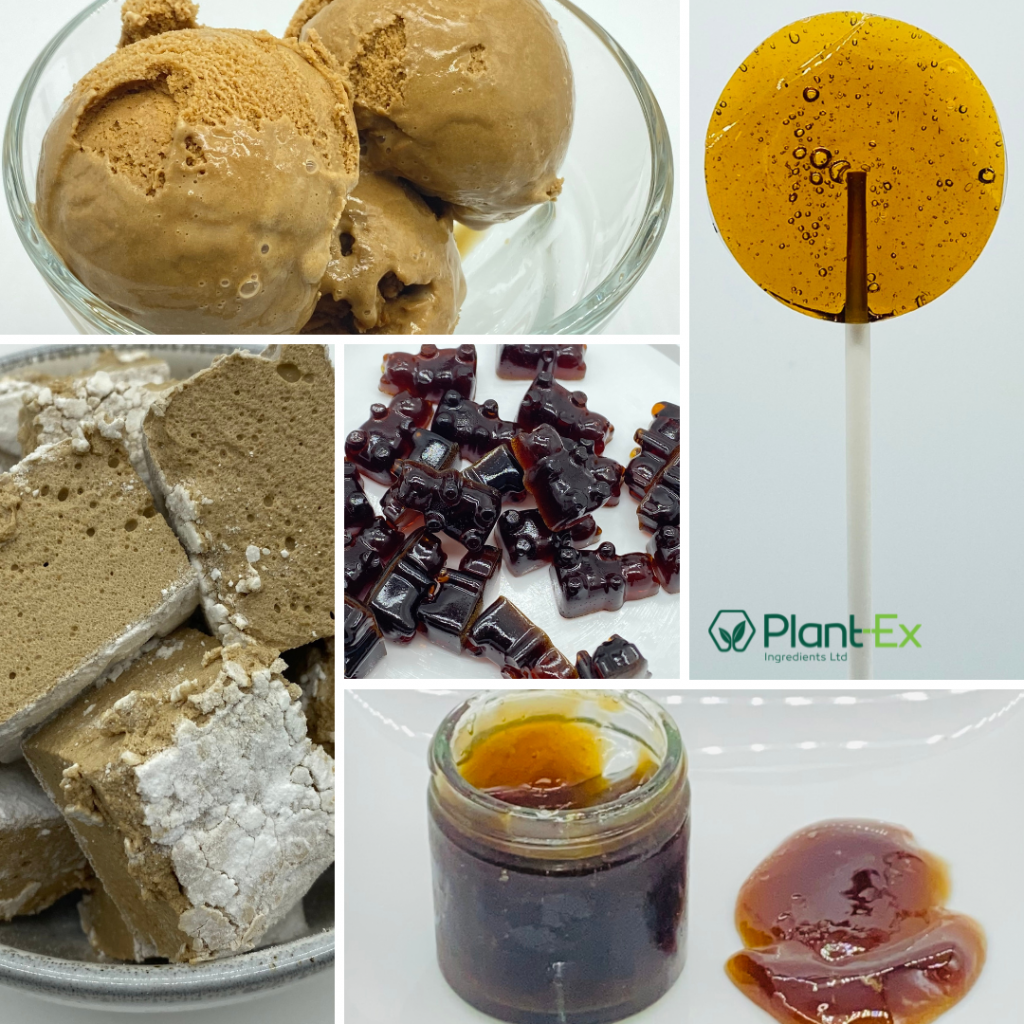Autumn is a beautiful time of the year! The days get shorter, the nights become colder and the colour of the leaves on the trees change colour. During this season, consumers turn to comfort food, and we are reminded of the delicious fall favourites.
This enchanting season inspires the food industry to create comforting and indulgent treats that truly remind us of autumn and winter through the use of certain colours and flavours. In the world of food, colour is incredibly important, and there is something undeniably appetising about the autumnal palette.
Seeking inspiration from the outside world for your next autumnal-themed food product? Look no further – we’ve got all the colour solutions for you!
What are Autumnal Colours?

Autumn’s palette is warm and earthy with reds, oranges, yellows, and browns. Many industries take inspiration from these colours, for example, the fashion industry, so why should the food industry not seek inspiration from these warm tones, too?
Plant-Ex has made your life easier by highlighting the best colour options for your seasonal applications. Carry on reading to find out which colours will work best for your autumn-themed treats.
Red
Red is one of the many colours that are associated with Autumn. It is a colour that stands out and is extremely popular within the food industry.
To stay on theme with Autumn, red colours are great to be used in sweet or savoury pies, chutneys and even mulled wine!
Red Beet

Red beet is derived from beetroot, creating a variety of different red shades.
Red Beet is an extremely popular colour to use within your product, the shades given range from a deep blue-shade red to a bright blush red.
It is a top pick for many due to it being very cost-effective and suitable for vegans and vegetarians. Plant-Ex has formulated both a water-soluble liquid and powder format, as well as an oil-soluble liquid, so it can be used across a variety of applications.
Plant-Ex has manufactured red beet as a natural colour and a colouring foodstuff. Where a natural colour is used, it must be declared as a function on product labelling – in this case, ‘Colour: Red Beet’ or ‘Colour: E162’. However, if you wanted a clean label declaration you can declare it as ‘Red Beet Concentrate’ on the back of pack – this is great for enticing more health-conscious consumers!
Unfortunately, the bright red colour fades to a dull brown when used at high temperatures due to its low heat stability. We would not recommend using red beet in products with high-temperature processing such as baked products or UHT-treated dairy products.
Below is a photo demonstrating red beet concentrate at room temperature (left) compared to red beet concentrate after being heated to 75 degrees Celsius for 25 minutes.

Carmine

Carmine is derived from female cochineal beetles, providing a beautifully bright red colour with excellent stability to light and heat. Due to its great heat stability, it is the go-to choice for food manufacturers using heat processing to manufacture their products. For example, it is normally used in red velvet cakes!
A Carmine pigment carries the E-number E120, so it will need to be labelled on the back of pack as ‘Colour: E120’ or ‘Colour: Carmine’. Unlike red beet, there is no Colouring Foodstuff alternative for carmine, so it wouldn’t be considered clean label.
It’s important to note that Carmine is not suitable for vegetarians or vegans, due to it being sourced from cochineal beetles. ‘Not suitable for vegans or vegetarians’ also needs to be included on your packaging.
Interested in more of our red colours? Check out our blog post that runs through a variety of Plant-Ex red shades, to help you choose the right red for your application: 50 Shades of Red
Orange
Orange brings the warmth that consumers long for over the autumn months. It is one of the many colours that emerge from the beautiful season, as the green colour starts fading away and leaves start to show orange pigments evoking happiness and warmth!
October 31st is Halloween when many people put pumpkins on their doorsteps as part of the season’s tradition. Throughout the months of September and October, many items on the shelf are coloured orange and made to look like a pumpkin – the below listed colours would be perfect for items such as these items!
Paprika

Paprika is a natural orange colour made from the dried fruits of the sweet Bell Pepper plant Capsicum annum. The viscous oleoresin is further processed into usable formats by Plant-Ex. We have developed a variety of water-soluble and oil-soluble, liquids and powdered paprika. Our technical team can help you to choose the best format for your application.
Paprika Extract can be manufactured either as a Natural Colour or a Colouring Foodstuff. If you’re using the Natural Colour option, your product labelling will need to read either ‘Colour: Paprika’ or ‘Colour: E160c’. If you’re using the clean-label alternative, it can be labelled as ‘Paprika Extract’.
Paprika extract is sensitive to light, but it can be stabilised against UV and heat oxidation using extensively researched combinations of natural anti-oxidants such as Tocopherols and Rosemary Extracts. It is pH and heat stable though, and we would highly recommend using this in bakery and confectionery products.
Get in touch to find out what options we have available at Plant-Ex today!
Carotenes:

Beta Carotene can be extracted from a wide variety of sources;
- E160a (i) Synthetic
- E160a (ii) Mixed Palm (RSPO Certified)
- E160a (iii) Blakeslea Trispora (Fungal)
- E160a (iv) Algal
Beta Carotene imparts orange to yellow shades, and there are no colour differences between Synthetic and Natural Beta Carotene.
The Beta Carotene raw material is extracted as an oil, but it can be further processed into water dispersible emulsions. Adding a high pressure homogenisation step provides beverage stability too, preventing ringing around the top of the bottle.
Annatto

Annatto is extracted from the resinous coating on the surface of the seeds of the Bixa Orellana shrub, and delivers warm yellow to orange shades, depending on the colour units. It has good stability towards heat and light which can be increased with antioxidants.
Amendments made under EU Regulation 2020/771 meaning Annatto must now be classified as:
Annatto: Bixin E160b (i)
Annatto: Norbixin E160b (ii)
Plant-Ex is fully compliant with EU Regulation 2020/771, offering a complete portfolio of Annatto-based colours following the implemented change in January 2021.
Don’t panic – these are not the only orange colours we offer. Read our blog post here for the Ultimate Guide to Orange Colours in Foods & Beverages, to help you choose the right shade for your application.
Yellow
Yellow leaves are a true sign that autumn is here – and luckily Plant-Ex have a large variety of yellow colours to select from. From bold and bright tones, to warm sunshine yellow, we have a variety of solutions to choose from.
Curcumin

Curcumin is the most popular yellow colour manufactured at Plant-Ex. This is likely because it is the most cost-effective and produces a bold and vibrant sunshine yellow shade.
Curcumin isn’t particularly light stable, however Plant-Ex have created a light stable version by finely milling and encapsulating the pigment into a water soluble medium. This is instead of dissolving the pigment in polysorbates, which is how it is usually done.
You can read about our light stability testing on Curcumin LS in our ‘Yellow Colours’ blog post here: The Ultimate Guide to Yellow Colours In Food & Beverages.
Suitable applications for Curcumin include: Beverages, Nutrition, Ice Cream and Dairy, Confectionery, Bakery, Snacks, Sauces and Seasonings, Meat
Safflower

Safflower is a bright yellow Colouring Foodstuff, meaning it has a clean label declaration which appeals to certain consumers. On the back of pack, this would be declared as ‘Safflower Concentrate’.
Safflower is produced using non-selective extraction methods, such as squeezing, crushing and milling from normally consumed, characteristic ingredients of food.
At Plant-Ex, we have created water-soluble liquid and powder options to choose from, however unfortunately we do not have an oil-soluble option at this stage.
Lutein

Lutein is extracted from Marigold flowers, grown abundantly throughout South America. The pigment is a Carotenoid and belongs to the group called Xanthophylls. It produces a warm, lemon-yellow colour at low dosages, however the shade can be intensified to a more orange tone when the dosage is increased.
Unfortunately, lutein is susceptible to light, but Plant-Ex can improve its performance using anti-oxidants depending on clients’ needs. It does, however, have good heat and pH stability! The back of pack labelling for lutein is ‘Colour: E161b’ or ‘Colour: Lutein’.
Plant-Ex source Lutein as an Oleoresin. However, this can be dispersed into Sunflower Oil and protected against oxidation with the addition of Mixed Tocopherols to create an oil-soluble liquid. The Oleoresin can also be emulsified so that it is water soluble for use in dairy and beverage applications. Plant-Ex have manufactured many usable formats of lutein – get in touch to find the right lutein product for you!
Brown
Brown shades are the predominant shades in the autumn season, and are popular for many ‘warming’ foods, such as cakes, coffees, pies and stews etc. Whether you’re looking to create an autumnal brown drink, or want to deepen the shade of the pastry on your pie, Plant-Ex have a large offering. Get in touch to request any samples!
Caramel

The process of caramelization consists of heating sugar slowly to around 170 °C. As the sugar heats, the molecules break down and re-form into compounds with a characteristic colour and flavour. Extremely heat stable and at an ideal pH of 5 – 8, Caramel / Burnt Sugar is a luxury ingredient which has adds indulgence and sweetness to your product. Used in baking, glazings, alcohols and chocolates, it is a trending item that is extremely saleable.
The caramel colours Plant-Ex supply are:
- E150a Burnt Sugar
- E150c Ammonia Caramel
- E150d Sulfite Ammonia Caramel
The most popular caramel is E150a Burnt Sugar – it is the most cost-effective, and can also be considered clean-label. This means the E-number doesn’t need to be declared on the BOP. It provides warm yellows and soft brown shades as well as adding a typical caramel flavour.
E150c Ammonia Caramel gives more of a yellow-brown shade and is suited towards sauces and beverages. Typically, this is the colour that is used in beer!
E150d Sulfite Ammonia Caramel is the darkest caramel colour, and gives a deep brown shade. We recommend using E150d in soft drinks and animal feed (please check the up-to-date regulations to ensure E150d Sulfite Ammonia Caramel is permitted in the animal feed you’re manufacturing).
All of the above are available in water-soluble liquid and powder formats!
For more information on our caramel colours, you can read about our caramel portfolio here: All you need to know about Caramels.
Malt Extract

Malt Extract is made using roasted malt from Barley, creating a dark brown shade. As Malt is extracted from Barley, it carries a Gluten Allergen. The gluten level is low and often undetectable, however this will still need to be listed in bold on the back of pack as ‘Malt Extract’.
We would recommend using malt extract in Confectionery, Beverages, Dairy, Glazes & Fillers and Bakery products.
Create your fall favourites with Plant-Ex. Our team is ready to help you choose the right colour and dosage for your product. If you are working on an application, or after any samples, please make sure you get in touch with us today: sales@plant-ex.com
